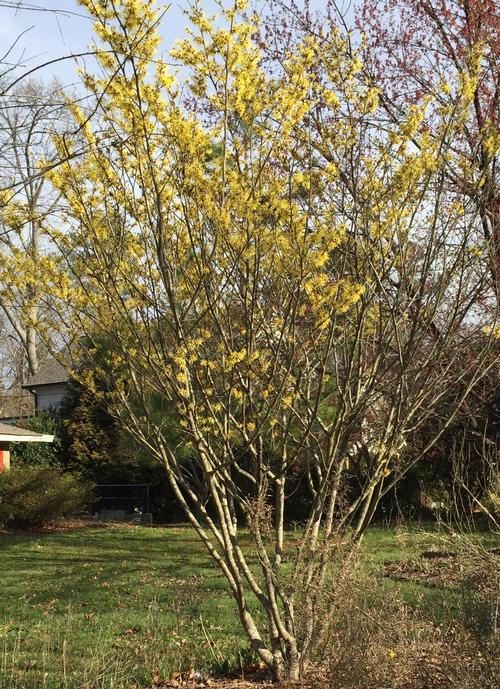Hamamelis virginiana
The fragrant yellow flowers have four straplike petals and are visible for two to four weeks. Flowers bloom as early as October and as late as December. Hamamelis, from the Greek words meaning “together” and “fruit,” refers to the presence of fruits and flowers on the branches at the same time. The 1/2" long velvety capsules form from flowers that bloomed the previous year. Once ripe, the fruit pops open and shiny black seeds are forcibly ejected up to 30 feet away.
Plants grow in a vase shape, narrow at the bottom and wider at the top. The fall foliage is intense yellow.
Plants provide cover for wildlife as well as nectar for early-season pollinators. The fruit is eaten by small mammals and birds. Wild turkeys eat the seeds.
Common witchhazel can be grown as a multi-stem shrub or small tree and is a great choice for naturalized areas, shrub borders, and near large buildings.
- Native, deciduous small tree or shrub
- Brilliant yellow fall color
- Fragrant, yellow flowers in fall
- Category:
Shrub,
Native
- Hardiness Zone: 3-8
- Height: 20-30 ft
- Spread: 20-25 ft
- Bloom Color:
Yellow
- Foliage Color:
Green
Login for pricing


